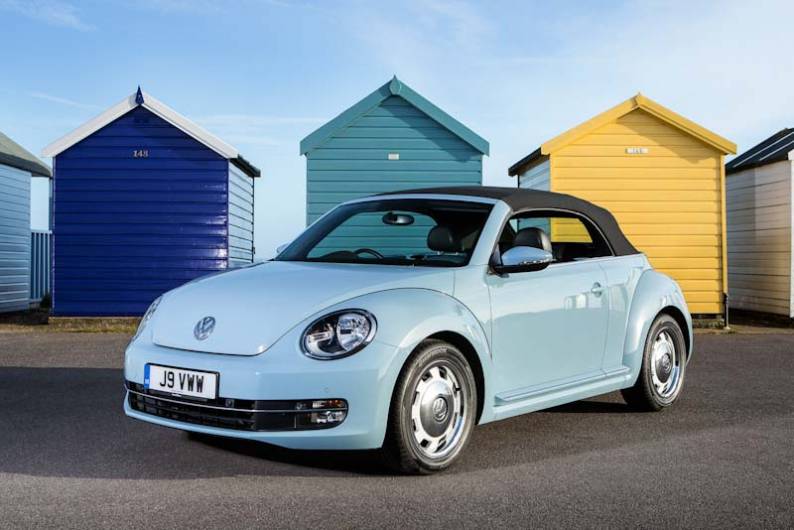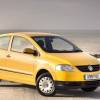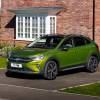
RAC sale – up to 33% off*
• Roadside cover from £5.29 a month†
• We get to most breakdowns in 60 mins or less
• Our patrols fix 4/5 breakdowns on the spot

By Jonathan Crouch
Introduction
Let's face it, you don't buy a used Volkswagen Beetle if practicality is at the top of your agenda, so why not go the whole hog and opt for a soft top? The third generation Beetle Cabriolet is strong on style and looks a really great ownership proposition. It's everything its predecessor needed to be.
Models
2dr Convertible
History
Oscar Wilde tells us that the only way to get rid of temptation is to yield to it. And if you're amongst those who've always promised themselves a modern, affordable yet nostalgically styled convertible, then what you might well be thinking of yielding to is something like this, the third generation Beetle Cabriolet.
This of course is the soft top version of one of the most iconic cars ever built, first introduced back in 1949 and still in production over half a century later, by which time over 330,000 open-topped Beetles had been sold. In 2002, the same Mexican factory that had made the final classic models began producing a 'New Beetle' Cabriolet and nearly a quarter of a million of these were made before the production run ended in 2010 to make way for the car we have here.
Bigger, better equipped, with superior engineware and much-improved quality, this newer cabriolet arrived in the Spring of 2013 and proved to be a definite step upmarket, even though it still remained the most affordable route into Volkswagen soft-top ownership. It was also rather unique in the affordable drop-top segment, offering the kind of character buyers simply couldn't get in soft-top versions of ordinary family hatchbacks, the kind of rear seat space they'd never find in a convertible MINI and the sort of proper 'wind-in-the-hair' experience that couldn't be fully replicated by open-topped cars of the period like the Fiat 500C and the Citroen DS3 Cabrio that weren't really fully-fledged convertibles. This model got a mid-term facelift in 2015, at which point a trendy 'Dune' version was added to the range. Production ended in 2019.
What You Get
A 'new original'. Is that what this is? Volkswagen reckoned so and you can see why. As with the fixed-top 'Coupe' version, the aesthetics of this design have far more in common with the classic post-war original than was the case with the 2002 'New Beetle' Cabriolet, that car's semi-circular wings defining jokey cartoon strip looks. Here, the styling is bolder, more dynamic and more masculine, incorporating much more of the feel of Dr Ferdinand Porsche's early 'Peoples' Car', most notably in the large wheels plumply positioned beneath flared flowing arches.
So there's something of the past, artfully mixed with a sporty vision of the future in a car that's longer, lower and wider than its predecessor, with a longer wheelbase. It's also an awful lot stiffer, thanks to copious body strengthening across the floor and thicker A-pillars, which is why it won't judder about so much over the bumps. Most small soft-tops need vibration dampers to try and take care of that but this Beetle doesn't need them.
Onto the electrically-folding roof which incorporates a proper heated glass rear window and powers back in just 9.5s to sit in typical pram-like fashion over the boot and block your view rearwards. Don't even think about buying a version of this car without the rear parking sensors that were only optional on base models. That apart, there's little to complain about, unless you object to having to fiddle about fitting the tonneau cover that comes with the car, there to smarten up the folded sandwich of fabric. We're guessing that most of the time, if you owned this car, you probably wouldn't bother.
Diehard cabrio drivers who insist on continuing on top-down in the rain will find that the furled hood catches part of the water, then drops it on your passengers' heads when you put the roof up, a process that occupies 11s. But we're nit-picking here: this is at least a proper, fully-fledged convertible (unlike the giant fabric folding sunroof you get on rival soft-top Fiat 500s and Citroen DS3s from this period). And impressively, the electric roof operation is almost silent, in contrast to the asthmatic creaks and groans you get in a convertible MINI from this time.
One of the advantages of the way the roof sits proud of the passenger compartment just above the integral rear spoiler is that it doesn't take up bootspace, which is pretty reasonable for this class of car at 225-litres, 24-litres more than the previous model, enough (if you can negotiate the narrow loading bay) for a couple of small suitcases and about double what you'd get in a comparable open-top Fiat 500 or MINI. If that's not enough, you can fold down the rear seatbacks using the provided neat levers, freeing up a lot more space.
That's assuming you're not using the back seats of course. Unlike many of its rivals in the small convertible sector, this car has a big enough cabin to comfortably take four adults - for short to medium journeys anyway, provided the occupants aren't excessively tall. Those that are will appreciate a design that's freed up 12mm more headroom than was offered in this car's predecessor. When these chairs aren't in use, we'd advise that you try and use the removable wind blocker whenever possible. It makes a big difference to the cabin turbulence and stows away in a special slot in the top of the boot when not needed.
And up front? Well, as promised, the interior does indeed feel more akin to that of the original post-war Beetle, in the unlikely event that you remember one of those, with the slab-sided dash the same colour as the paintwork in most models, even if it's no longer fashioned from crudely painted steel. The twin gloveboxes are a nod to the early car too (which is nice) but just as tiny (which isn't). In real time use, the elastic straps over the door bins (supposed to be able to hold a 1.5-litre bottle) aren't very practical either. There's more use of hard plastics in this Mexican-built model than you'd find in a German-made Golf, but they all seem tough and potentially long-lasting.
You sit much further forward than you did in the previous generation version of this car, closer to the swept-back front windscreen, viewing a big central speedo flanked with rev counter and ancillary gauges through a sporty three-spoke thin-rimmed wheel. You'll look in vain for the MK2 Beetle's dash-mounted flower vase though. Good. Top models also get a triumvirate of additional dash-top dials as standard - turbo pressure, stopwatch and oil pressure - which seem as if they'd be a bit superfluous to the likely needs of typical cabriolet customers.
What You Pay
Please fill in the form here for an exact up-to-date information.
What to Look For
Most owners of this 2013-2019-era 'A5'-series MK3 Beetle Cabriolet model we surveyed were very happy with their cars, but inevitably, there have been those who have had problems you'll want to look out for. One owner had two rear arm bushes, a front coil and whole new ignition barrel and steering lock go in a year, plus a brake fault and an electrical fault. That was the exception though. Generally, this particularly Beetle seems pretty stoutly built. Parking sensors weren't standard on entry-level models, so look out for scrapes and dents on cheaper-spec cars. Many variants used light-coloured materials that can look grubby if not looked after. There were three product recalls for this design in its production life. The first was in 2011 for starter motors on diesel models which may overheat. The second related to a potential loss of steering stability due to a deformed rear axle on models produced between 2011 and 2013. Lastly, there is a possible fire risk on models made between April and August 2014 because of a duel leak. With variants affected, check that the necessary dealer visits have been made. We haven't come across any complaints about the powered hood but make sure that its functionality is up to scratch. Make sure that the tonneau cover hasn't been mislaid.
Replacement Parts
[based on a 2015 model Beetle Cabriolet 1.4 TSI ex VAT] An air filter will be priced in the £10 to £18 bracket, an oil filter will sit in the £6 to £12 bracket. A radiator will likely cost around £98. The front brake discs we came across commonly sat in the £50 to £70 bracket, with pricier-branded discs costing between £120 and £250. The rear brake discs we came across commonly sat in the £45 to £82 bracket, with pricier-branded discs costing up to around £160. Rear discs sit in the £27-£80 bracket. Front brake pads are in the £17 to £44 bracket. Rear pads cost in the £13-£32 bracket. A headlamp is around £163. A water pump is around £97-£146. A radiator is around £98. Wiper blades cost around £3-£13.
On the Road
The old post-Millenium 2002-2010-era Beetle Cabriolet was a boulevardier machine, happily transporting ladies who lunched from treadmill to tanning salon as they wiled away their empty days. Questions of ride and handling simply weren't asked by likely owners, which was just as well because by and large, the chassis wasn't up to answering them. Those looking for that could go off and buy a convertible MINI - and increasingly, many did. All of which earned this replacement third generation soft-top Beetle a pre-conceived reputation it didn't really deserve.
It did, after all, share almost nothing with its predecessor. As a driver, you're sat properly forward rather than somewhere vaguely near the middle of the thing. Over bumps the car doesn't shake and rattle about as if it's about to fall to pieces. Put your foot down and you actually make meaningful progress forward. And there's no ridiculous bud vase in the centre of the dash to make the whole design so annoyingly gender-specific.
We musn't get carried away of course. Despite a 20% improvement in body stiffness, there's none of the go kart eagerness of a MINI Convertible - but then in this Volkswagen, you also do without the MINI's awful ride, wobbly body and cramped cabin. That's a trade we think most will be quite happy to make. Especially given that this post-2013 Beetle design is so much more dynamically adept - and so impressively refined roof-up. The steering's still a bit vaguer than we would like, but at least in this form, the car feels more willing to change direction when you ask it to, especially in the pokier petrol guises that get the XDS electronic differential lock system that was developed for the Golf GTI. This lightly brakes the inside front wheel through tight bends, sharpening turn-in and ensuring that all the power gets onto the tarmac. It's rather surreal to feel all this working beneath you in a car that, as an enthusiast, you approach with such low expectations.
Without this trickery, lower order Beetle Cabrios are less able on the twisty stuff, but then potential owners of these models won't be looking to throw their cars around. What they're more likely to notice is an accomplishment that most compact convertibles really struggle with: truly excellent standards of ride thanks to a hi-tech multi-link rear suspension set-up that isn't fitted to most tin-top Beetles and can't be found on lower-order Golfs of this period either. As a result, though you feel really poor surfaces, you do so far more remotely than would be the case in most other small soft-tops.
On to the roof, a beautifully tailored multi-layered piece of heavy duty fabric that at the press of a button rises up in 11 seconds, folds away in 9.5s and is operable at speeds of up to 31mph. That's in contrast to the similar soft-top fitted to the Golf Cabriolet from this era that requires you to slow right down to 18mph before the electrics will work. You'd be amazed by how much difference that extra 13mph makes in day-to-day usability. Like all proper convertibles, you'll find it a bit blustery when driving al fresco unless you put the windows up, but with the optional wind deflector in place across the rear seats, things improve considerably.
As for engines, well they're all borrowed from the older MK6 model Golf - so in other words, a couple of generations more modern than those supplied in the previous generation version of this car. There's decent power on offer for those who really want it - a 200PS 2.0-litre TSI petrol unit from the old Golf GTI that makes 62mph in 7.6s on the way to 139mph. Or you could go for a 140PS 2.0TDI diesel that manages 9.9s and 122mph. We're not sure though, that we'd bother with either: this isn't the kind of car that's really at its best driving at those kinds of speeds.
Which leaves us with the variants that accounted for almost all original UK sales. The two main versions - an eager 1.2-litre TSI petrol and a 1.6-litre TDI diesel - both develop 105PS and make 62mph in around 12s en route to 111mph. If you've a little more in the budget though and wouldn't mind a little extra punch, then don't ignore the 160PS 1.4-litre TSI petrol unit, which manages 8.6s and 128mph and could very well be the prime pick in the range. Urban folk who don't want the slick 6-speed manual gearbox also get DSG auto transmission options at the top and bottom of the line-up, with an older 6-speeder available on the 2.0 TDI and a more efficient 7-speeder available on the base 1.2 TSI.
Overall
Like the idea of a used Beetle Cabriolet? Then you'll like this one very much indeed. If you don't, then nothing any seller of this car will say about the more efficient engines, the better driving experience and the extra boot space is likely to convince you. Retro design is like that - which is why when this car was new, Volkswagen also offered soft-top Golf and folding hard-top Eos cabriolet models for those who couldn't really see the point. Those convertible designs arguably represent a more sensible choice, but then who ever bought a small convertible for sensible reasons?
A car like this is - and should be - an indulgence, a bit of fun. Exactly like soft-top Beetles always have been. And, after years of being viewed as a novelty car whose appeal had long worn off, this Volkswagen was, in this post-2013 form, rejuvenated as a hot ticket in this segment. It's also stoutly built, generally reliable and charismatic. We can see why a certain kind of buyer might really want one.







